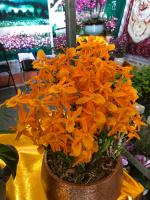Why Were Sycamore Trees Planted by Old Homes?
It's common to see large, old sycamore trees planted near historic homes and buildings. These majestic shade trees can live for several hundred years and are often associated with the past. But why were sycamore trees particularly popular to plant by old homes?
The Historical Context
The sycamore tree, also known as the American plane tree, has a long history in North America. The Native Americans used the wood to make dugout canoes, and early European settlers found that the wood was ideal for making furniture and even houses. Sycamores were particularly popular in the eastern United States due to their abundance and durability.
As people began to build homes and towns along the East Coast, sycamore trees became a popular choice for shade trees. The large leaves and spreading branches were perfect for creating cool, shady areas in the hot summers. Sycamores even became a symbol of progress and civilization, as they were often planted along new roads and near important public buildings.
The Aesthetic Appeal
Aside from their historical significance, sycamore trees were also prized for their aesthetic qualities. The mottled bark of the sycamore, which peels off in large flakes, creates a striking pattern that many people found attractive. The leaves turn a warm brown color in the fall, adding to their visual appeal.
Additionally, sycamore trees have a large, spreading canopy that creates a sense of grandeur. This is particularly desirable near old homes and historic buildings, which often have a stately, imposing presence. Sycamores serve to enhance the aesthetic appeal of these structures, making them seem even more impressive.
Sycamores Today
Today, sycamore trees are still popular among homeowners and landscapers. They are often used as street trees or planted near historic buildings as a nod to the past. However, sycamores are also planted for their environmental benefits. Their large size and dense foliage make them excellent shade trees, which can help reduce energy usage in buildings during hot summers. They are also known to absorb pollutants and improve air quality.
Sycamores are not without their drawbacks, however. The trees have an enormous root system, which can cause problems for sidewalks and other hardscape features. They are also susceptible to certain diseases and pests, which can make them difficult to maintain.
In Conclusion
So why were sycamore trees planted by old homes? The reasons are complex and varied, but ultimately, sycamores served as a symbol of progress, civilization, and grandeur. Their aesthetic qualities and shade-producing abilities made them a popular choice for homeowners and landscapers alike. Today, sycamores continue to be valued for their environmental benefits as well. Whatever the reason for planting sycamore trees by old homes, there's no denying their enduring appeal and importance.

 how many times do yo...
how many times do yo... how many planted tre...
how many planted tre... how many pine trees ...
how many pine trees ... how many pecan trees...
how many pecan trees... how many plants comp...
how many plants comp... how many plants can ...
how many plants can ... how many plants and ...
how many plants and ... how many pepper plan...
how many pepper plan...































